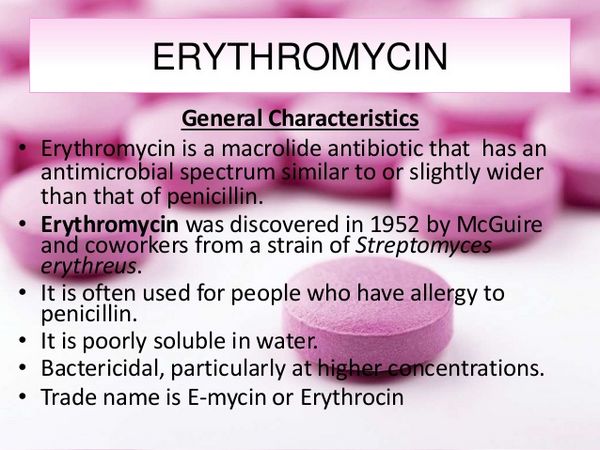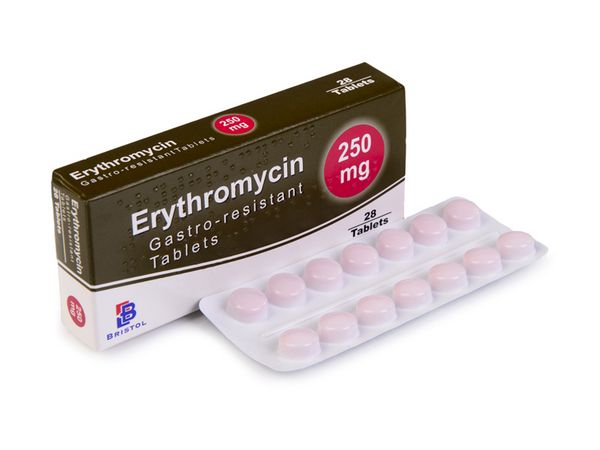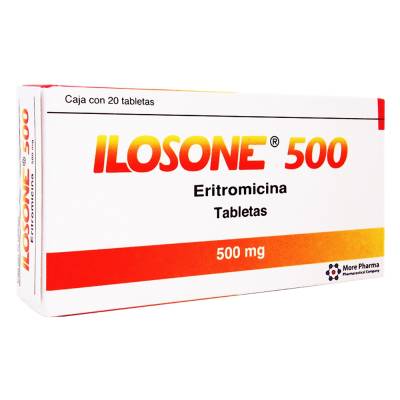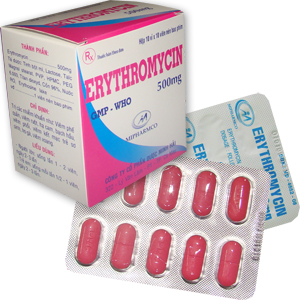Overview
Macrolides are a class of drugs that inhibit bacterial protein synthesis. They demonstrate excellent activity against atypical organisms (Mycoplasma, Chlamydia, and Legionella species), but have variable activity against typical pathogens (S. pneumoniae and H. influenzae).

Macrolides are indicated for use in mild-to-moderate community-acquired pneumonia and are typically used as first- and second-line agents for this indication. Likewise, they are used in combination with penicillins or cephalosporins for severe community-acquired pneumonia to provide atypical pathogen coverage.
Although resistance levels to the macrolides may differ among the various agents in this class, cross-resistance is assumed for gram-positive organisms.
The macrolides are available in oral and parenteral formulations. Compared with erythromycin, the prototypical macrolide, the advanced-generation macrolides have much longer serum half-lives, excellent distribution into respiratory tissues, and improved tolerability. Roxithromycin (Sanofi-Aventis’s Rulid, generics) is a macrolide launched extensively in Europe; its use has been in general decline and it will not be discussed further.

Side effects, particularly of the early macrolides, are associated primarily with the gastrointestinal tract (e.g., abdominal cramps, nausea, vomiting). Hypersensitivity reactions are rare. In comparison, the advanced-generation macrolides have a lower incidence of side effects. The prevalence of macrolide resistance in S. pneumoniae has increased dramatically over the past two decades.
Resistance is highest in the Asia/Pacific region: 78% resistance in Japan, 72% in Hong Kong. In Europe, France (47%) and Italy (42%) have a high prevalence of resistance. In the United States, 23-30% of pneumococci are macrolide-resistant.
Mechanism Of Action
Macrolides act by binding to the 23 S ribosomal RNA (rRNA) in the 50S subunit of the ribosome. Binding to the 23S rRNA inhibits the translocation of RNA during protein synthesis and blocks bacterial protein synthesis.

Macrolide drugs are generally bacteriostatic but can be bactericidal in highly susceptible bacteria or at high concentrations.
Erythromycin
Erythromycin (Abbott’s Erythrocin, Eli Lilly/Shionogi’s Ilosone, generics) is the class-standard macrolide and has been available since the 1950s. The agent has been widely utilized for RTIs, but the next-generation macrolides, which provide more convenient dosing, better tolerability, and expanded spectrum, have replaced this agent for more severe respiratory infections such as community-acquired pneumonia.
The agent is available in oral and parenteral formulations.
Erythromycin acts by binding to the 50S ribosomal subunit of susceptible microorganisms, thereby inhibiting protein synthesis. T
his agent is active against a range of gram-positive and atypical organisms and a limited number of gram-negative organisms. However, many strains of H. influenzae and S. pneumoniae are resistant to erythromycin. Early studies of erythromycin demonstrated its efficacy in RTIs. In a randomized, double-blind, Phase III trial, 591 patients with community-acquired pneumonia received either a single daily dose of dirithromycin (500 mg) or erythromycin (250 mg) four times daily.
Clinical response rates were similar in both treatment groups: the clinical and bacteriologic response rates for erythromycin-treated patients were 92.1% and 90.3%, respectively, and 94.5% and 93.0% respectively for dirithromycin-treated patients. Notably, the agent is associated with gastrointestinal discomfort in about 20% of patients, an adverse effect that has, in part, caused physicians to shift to the newer macrolides.
Clarithromycin
Clarifhromycin (Abbott’s Biaxin, Biaxin XL/Klacid, Taisho’s Clarith) is an advanced-generation macrolide commonly used for multiple RTIs, including community-acquired pneumonia, AECB, otitis media, and sinusitus. The agent is available in tablets, extended-release tablets, and granules.
Clarithromycin acts by binding to the 50S ribosomal subunit of susceptible microorganisms, resulting in inhibition of protein synthesis. Its spectrum of activity includes a range of aerobic and anaerobic gram-positive and gram-negative microorganisms, and like other macrolides, clarithromycin is highly active against atypical pathogens such as M. pneumoniae.
This drug is more potent against staphylococci and streptococci and is perceived to have modest activity against H. influenzae. The efficacy of clarithromycin has been established in multiple clinical studies. In one Phase III study, 280 patients with community-acquired pneumonia were randomized to receive either clarithromycin (250 mg) twice daily or erythromycin stearate (500 mg) four times daily for 14 days.
There was no statistically significant difference between the two groups in terms of clinical cure (52% for clarithromycin, 40% for erythromycin); clinical success (clinical cure and improvement; 89% for clarithromycin, 98% for erythromycin); or radiological response (90% for both groups).
On an intention-to-treat basis, clarithromycin showed better success: the clinical cure rate after two weeks of treatment was 45% in patients who received clarithromycin compared with 25% in the erythromycin group. Adverse effects, mainly gastrointestinal, caused discontinuation of treatment in 4% patients in the clarithromycin-treated group, compared with 19% of patients treated with erythromycin.



